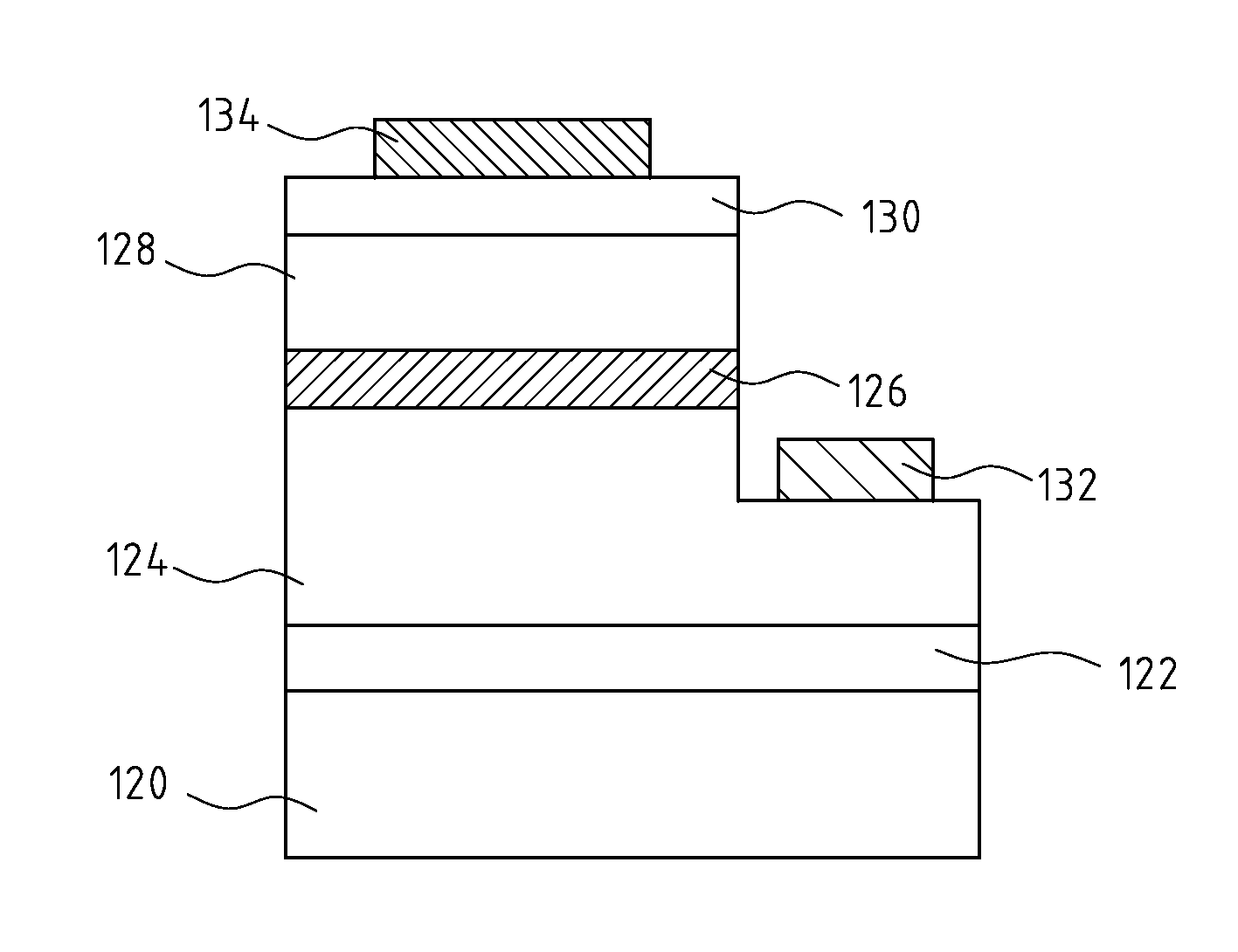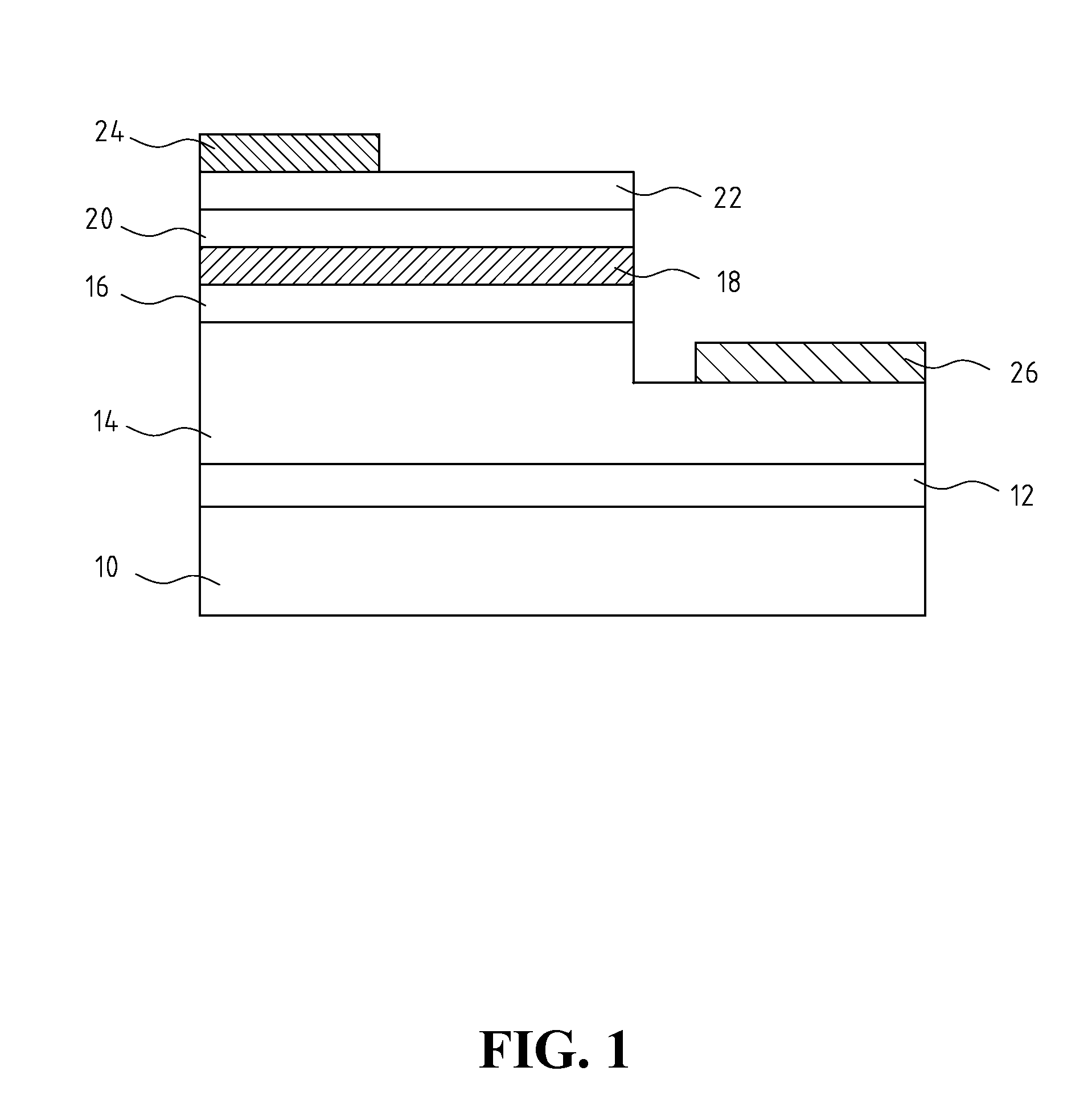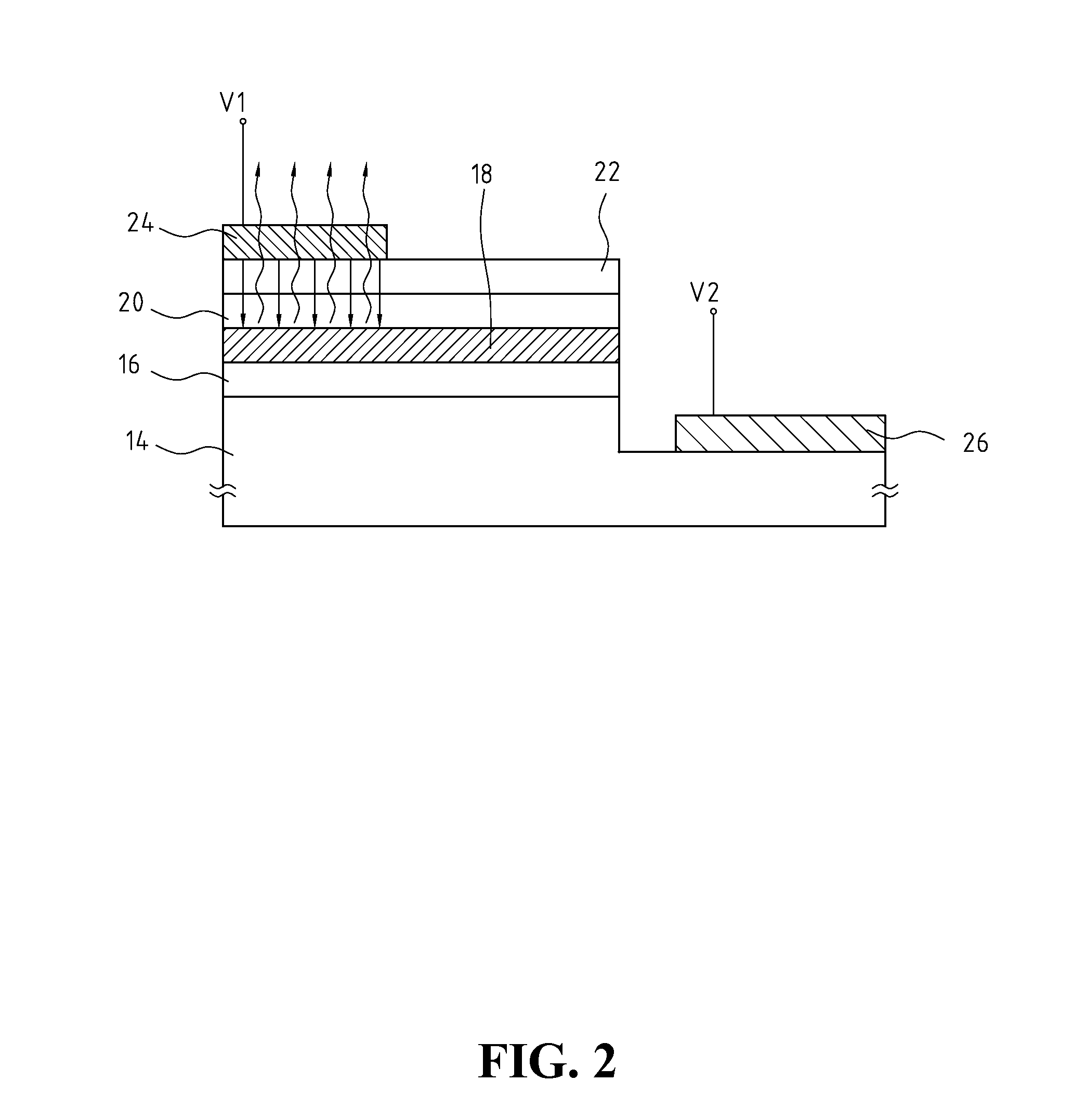Light Emitting Diode Structure
- Summary
- Abstract
- Description
- Claims
- Application Information
AI Technical Summary
Benefits of technology
Problems solved by technology
Method used
Image
Examples
first embodiment
[0032]FIG. 3 is a schematic, cross-sectional diagram showing a light emitting diode structure according to the present invention. As FIG. 3 shows, the light emitting diode 100 includes a substrate 120. The substrate 120 can be made of an insulating material or a semiconducting material of a conducting type. Various kinds of materials may be used without a specific limitation. Any commonly known or unknown material that can be used to form a light emitting diode's substrate can be used in the light emitting diode structure according to the present invention. Examples of the insulating material include, but not limited to, Aluminum oxide (Al2O3, sapphire), Aluminum nitride (AlN), Gallium nitride (GaN), Spinel, Lithium Gallium oxide (LiGaO3), Lithium Aluminum oxide (LiAlO3), etc. Examples of the conducting type semiconducting material include, but not limited to, Silicon carbide (SiC), Zinc oxide (ZnO), Silicon (Si), Gallium phosphide (GaP), Gallium arsenide (GaAs), Zinc selenium (ZnSe...
second embodiment
[0039] Furthermore, FIG. 5 is the schematic diagram of the band gap versus the thickness for the p-GaN layer, the InN layer, the InxGa1-xN layer, the InyGa1-yN layer, the InzGa1-zN layer, and the InN layer, sequentially stacked from bottom to top on the light emitting layer. As shown in FIG. 5, the band gaps, Eg, are decreased in the order of p-GaN layer 128>InxGa1-xN layer 130b> InzGa1-zN layer 130d> InyGa1-yN layer 130c. The band gaps of p-GaN layer 128, the InN layer 130a, the InxGa1-xN layer 130b, the InyGa1-yN layer 130c, the InxGa1-xN layer 130d, and the InN layer 130e, sequentially stacked from bottom to top on the light emitting layer, are found to be in a gradient ramp up, plateau and ramp down profile. If the band gaps of the layers stacked from bottom to top are designed in such a gradient ramp up, plateau and ramp down profile, the hole carriers can be much more easily injected from the electrode to the light emitting layer because the contact resistance can be reduced i...
third embodiment
[0040]FIG. 6 is a schematic, cross-sectional diagram showing a light emitting diode structure according to the present invention. The embodiment has a similar structure as shown in FIG. 3 or 4 except that a thin film 136 of a conducting type is formed on the contact layer 130. The thin film is used for current spreading and light transparency. The thin film can also be applied in a flip chip packaging of a light emitting diode so that a heat dissipation property and an anti-electrostatic capability of the light emitting diode can be enhanced. The thin film 136 is a transparent oxide conducting layer made of an oxide thin film or an alloy, both of one, two, or more metal elements selected from a group comprising Indium (In), Tin (Sn), Zinc (Zn), Nickel (Ni), Gold (Au), Chromium (Cr), Cobalt (Co), Cadmium (Cd), Aluminum (Al), Vanadium (V), Silver (Ag), Titanium (Ti), Tungsten (W), Platinum (Pt), Palladium (Pd), Rhodium (Rh), Ruthenium (Ru), etc. The thickness of the thin film is betwe...
PUM
 Login to View More
Login to View More Abstract
Description
Claims
Application Information
 Login to View More
Login to View More - R&D
- Intellectual Property
- Life Sciences
- Materials
- Tech Scout
- Unparalleled Data Quality
- Higher Quality Content
- 60% Fewer Hallucinations
Browse by: Latest US Patents, China's latest patents, Technical Efficacy Thesaurus, Application Domain, Technology Topic, Popular Technical Reports.
© 2025 PatSnap. All rights reserved.Legal|Privacy policy|Modern Slavery Act Transparency Statement|Sitemap|About US| Contact US: help@patsnap.com



